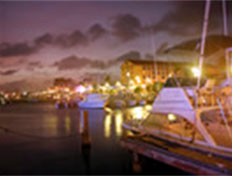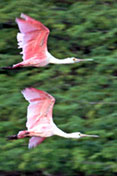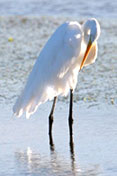Aruba is an amazing island of diversity and contrasts. Its not the beauty of the other Caribbean Islands, but the beauty of desert, of mysterious shadows at night, and of stark, contrasting colors by day.
Because of low rainfall, giant cactuses – the pride of which is the kadushi – grow profusely, dominating the landscape. The divi-divi tree, distinguished by its peculiar lopsided crown, also flourishes. Like silent sentinels, plantation houses stand silhouetted against azure skies, reminders of the colonial past. Goats roam the countryside and stamper across the roads.
Aruba boasts a vibrant tourist industry. Discovered in the 15th century by the Spaniards. Later, the Dutch took possession, and though the island were in the hands of the French and the English for brief periods, they reverted to the Dutch in 1815. Since 1954, the federation of the Netherlands Antilles, originally consisting of the ABC island (Aruba, Bonaire and Curacao) and three of the Leeward Islands (St Maarten, Sint Eustatius and Saba), has been self-governing in internal affairs. In 1986, though, Aruba was granted status aparte, or separate status.



The people are multilingual and apt to forget which language they are speaking, since switching languages is so normal. Although Dutch is the official language and English and Spanish are widely used in the business sector, Papiamento is the native tongue.



One theory suggests that Papiamento developed in the Cape Verde Islands of West Africa before the 17th century. The Portuguese used those islands as a base for forays into Africa, and to enable the Africans and the Portuguese to communicate, a new Creole tongue – a mixture of African languages and Portuguese – came into existence. Such a language that allows communication between different language groups is called a lingua franca. Later, slaves who were brought to the islands introduced this language. Over the years, the language was influenced by Dutch, Spanish, English, and French. The resulting Papiamento came to be a blend of all of them. The lingua franca developed by the slaves and introduced to the islands was, in essence, a way to bridge the communication gap and unify them.




